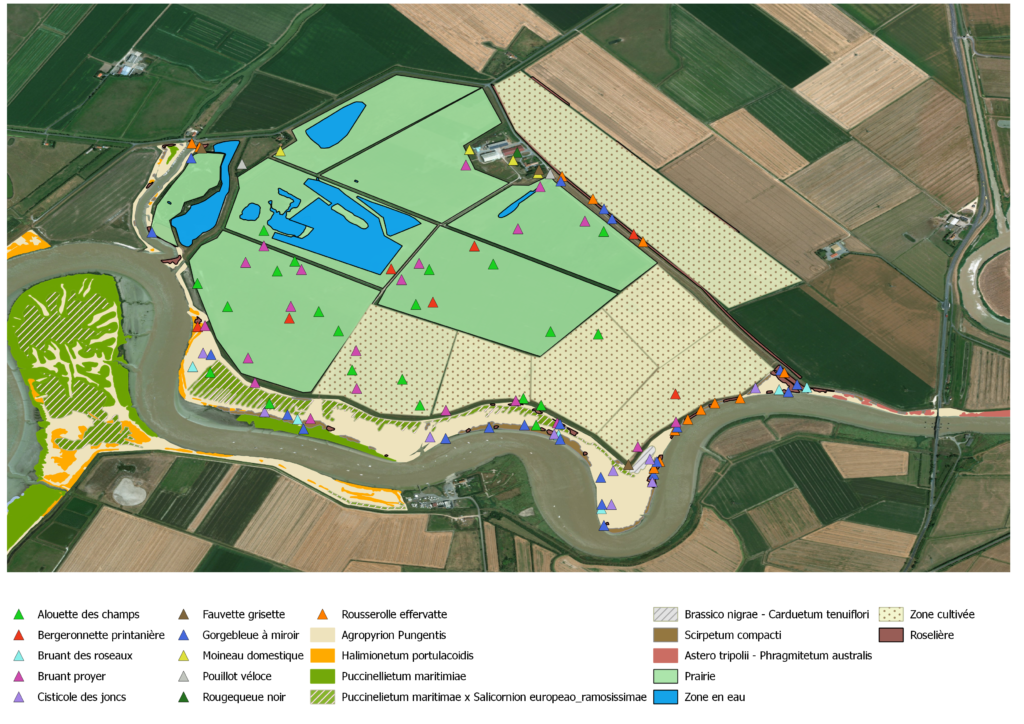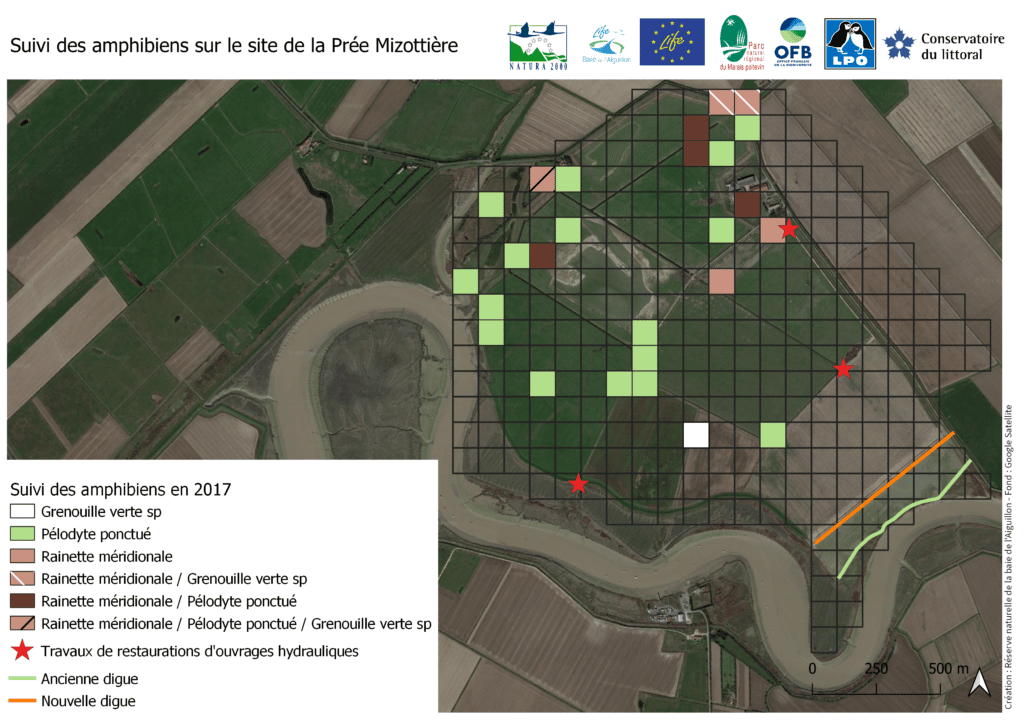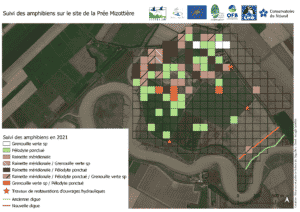Biological monitoring
THE CONTEXT
All actions carried out in a LIFE programme must be subject to an environmental assessment before, during and after their implementation. It is therefore in this context that various evaluations will be made. They concern:
- Ornithological monitoring by censusing breeding birds (mainly singing) along the entire edge of the Aiguillon Bay and on Prée Mizottière. This action takes place in the spring.
- Monitoring of amphibian populations during their “singing” period from February to April. This concerned the inner part of the Aiguillon Bay and Prée Mizottière. These areas is surveyed by sampling large quadrats. For each quadrat the number of contacts is noted thus allowing for the calculation of population densities and therefore to perceive their evolution over the duration of LIFE.
- Habitat mapping. This applies especially to the area concerned by depolderisation at Prée-Mizottière.
OBJECTIVES
In order to restore mudflats, a census of benthic fauna, particle size analyses of sediments as well as measurements of organic matter were carried out. The aim is to determine which species and habitats are present before and after management work and thus assess precisely whether the objectives have been achieved.
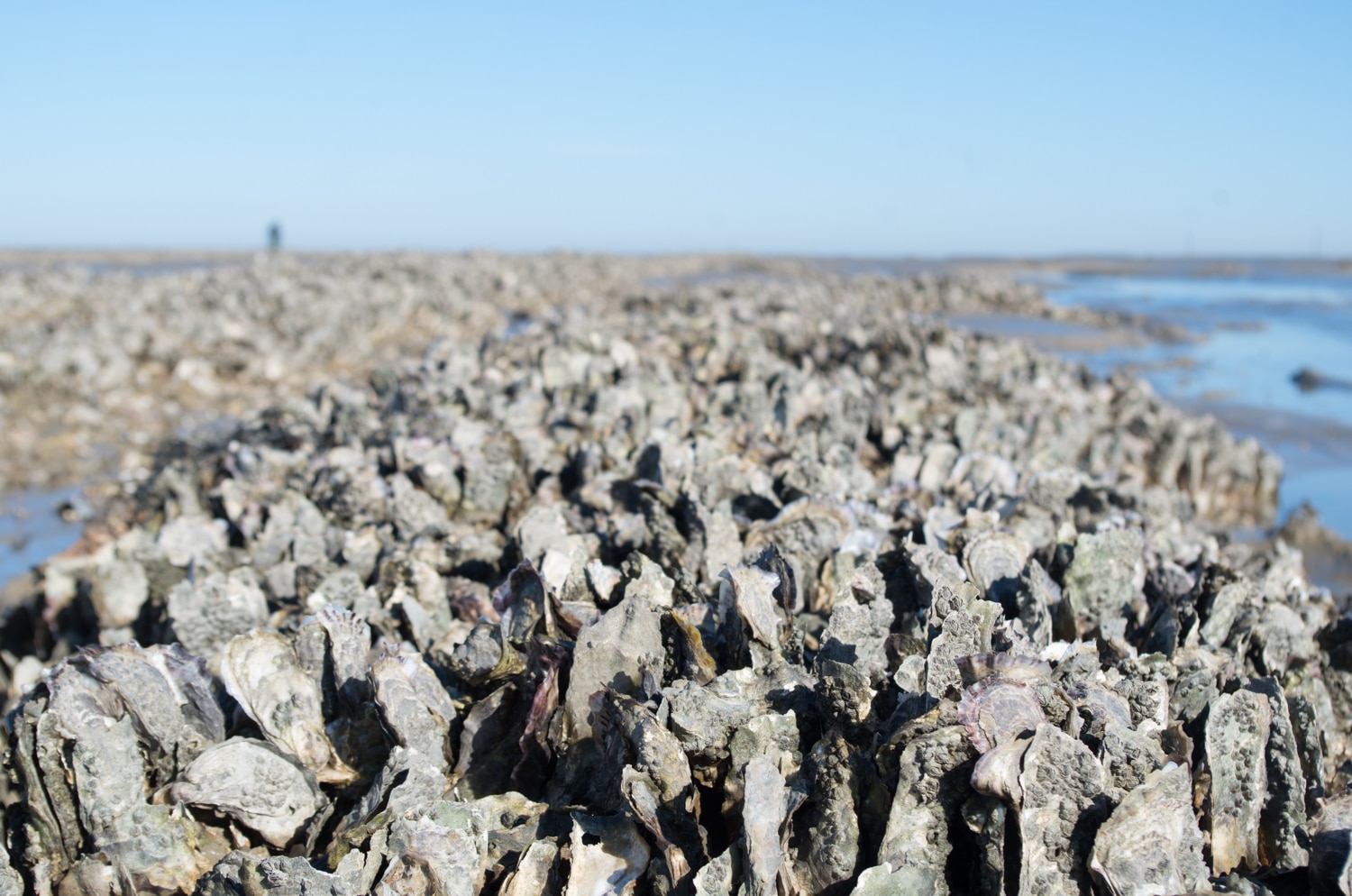
Benthic macrofauna is generally defined as those animals (fauna) that are visible to the naked eye (macro) and dependant on the substrate in or on which they live (benthic), whether hard (rocks, flats) or loose (sands, mudflats).
These are essentially invertebrate organisms. These organisms and communities of organisms are widely used to assess the impact and levels of disruption of marine and inland aquatic environments, as well as to monitor restoration processes.
THE STUDY’S PROGRESS
The survey of macrofauna consists of taking "core samples" of mud (diameter 20 cm, depth 20-25 cm) at 3 stations each comprising of 3 substations and 3 samples at each, a total of 27 mud samples per study zone (Pointe de l'Aiguillon, Charron and Canal de Luçon – see map). At the same time, oyster numbers were estimated at “crassates” by the use of quadrats (area of 0.1 m²).
Soft sediments are also collected for a later analysis of particle size structure and the organic matter of each substation.
In order to distinguish the "natural" spatial variability from that related to our work, "control" sites not impacted by the work or as a result of it were studied. The latter are distributed throughout the Baie de l’Aiguillon as well as in similar environments: in the Marennes Oléron Bay, on the mudflats at Saint Froult and at Port des Barques.
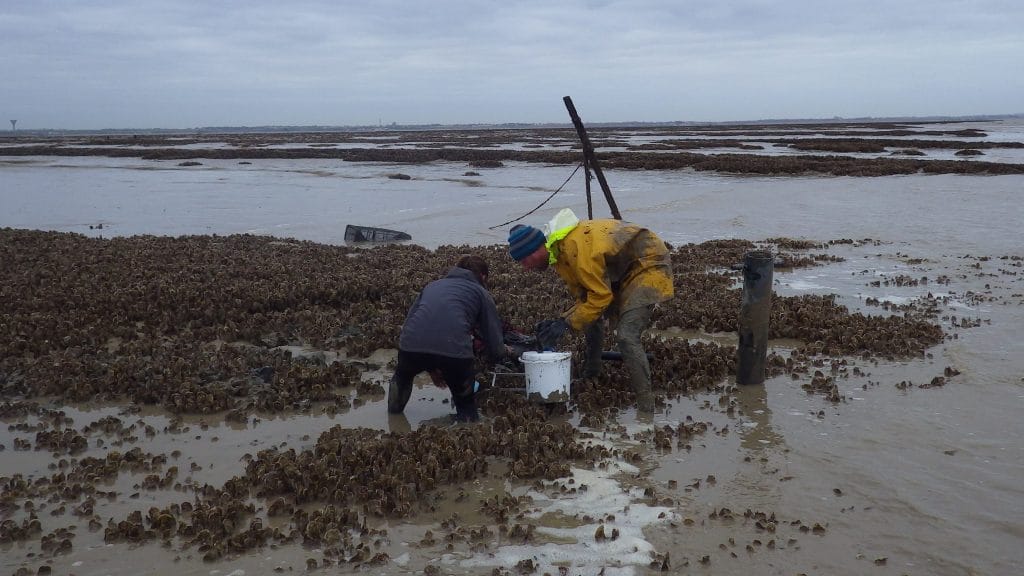
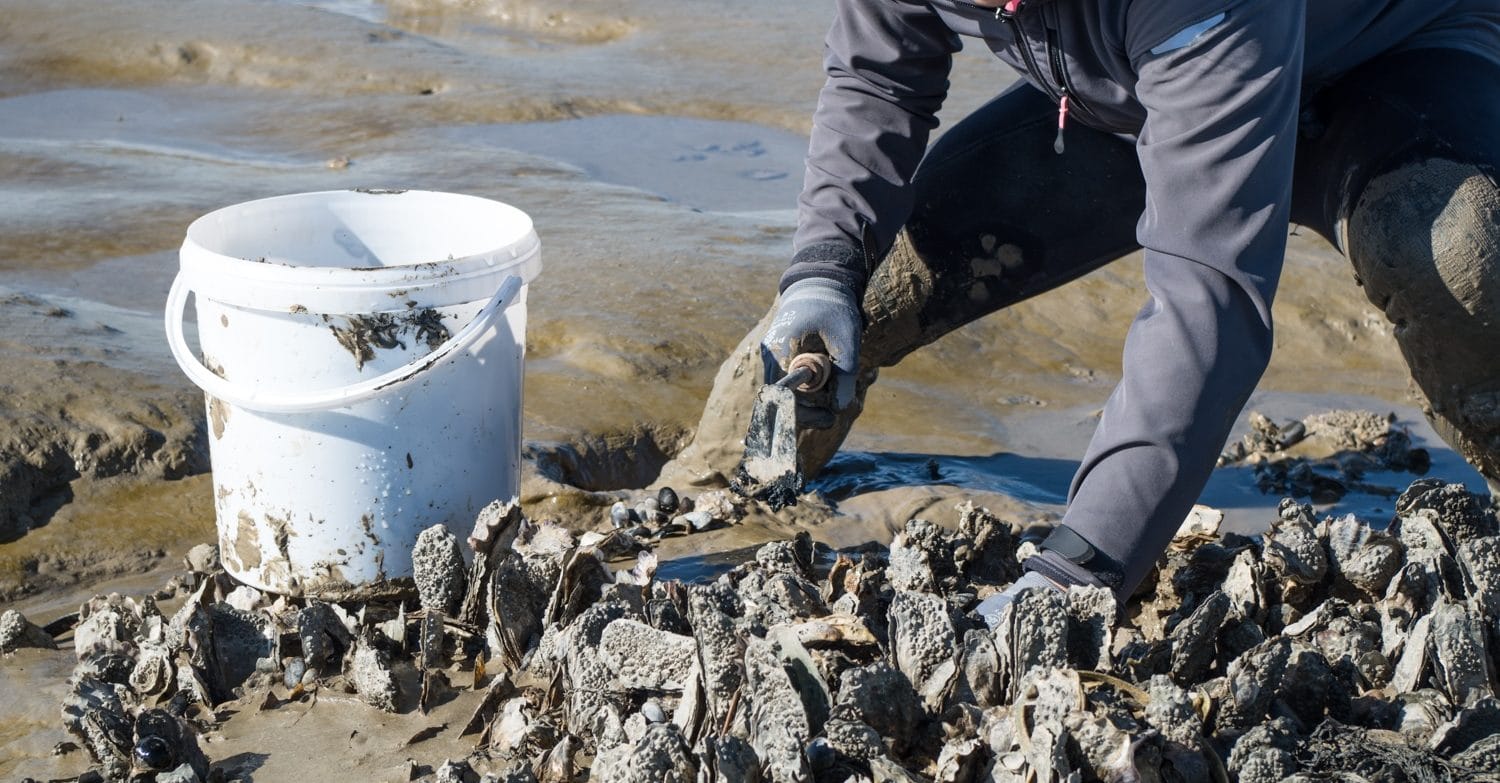
RESULTS
Common estuarine species including worms such as Ragworm Hediste (Nereis) diversicolor or the Hydrobiidae Laver spire shell Peringia ulvae were found In soft substrates. The Peppery furrow shell Scrobicularia plana was found mainly in mud while the sandy-muddy substrate of the Pointe de l'Aiguillon favours the presence of the Common Cockle Cerastoderma edule. Few non-native species were found in soft substrates during this study.

The study reveals the great diversity that the oyster deposits host due to the three-dimensional structure of this habitat. However, the samples collected on oyster beds contained introduced species, such as the barnacle Austrominius modestus, the Brush-clawed shore crab Hemigrapsus takanoi or the Nassa mud snail Tritia neritea.
Jérôme Jourde's report can be downloaded here: Jourde J (2018) Etude biosédimentaire des communautés benthiques des récifs d’huîtres en baie de l’Aiguillon - état avant travaux
OBJECTIVES
The LIFE Baie de l'Aiguillon project planned to increase measures to channel the public, in order to preserve dune habitats from trampling and stabilize the sand. Measures within these actions include among other things: the installation of wooden fencing, smooth wires and demarcation posts and the removal of some of the concrete blocks.
This work contributes to better conservation of the point's habitats, to the development of a plant complex associated with upper dune habitats and thus improve the capacity of these areas to support passerines dependant on these environments. In this context, a preliminary step of the work consisted in evaluating the potential of the site, particularly for breeding birds.
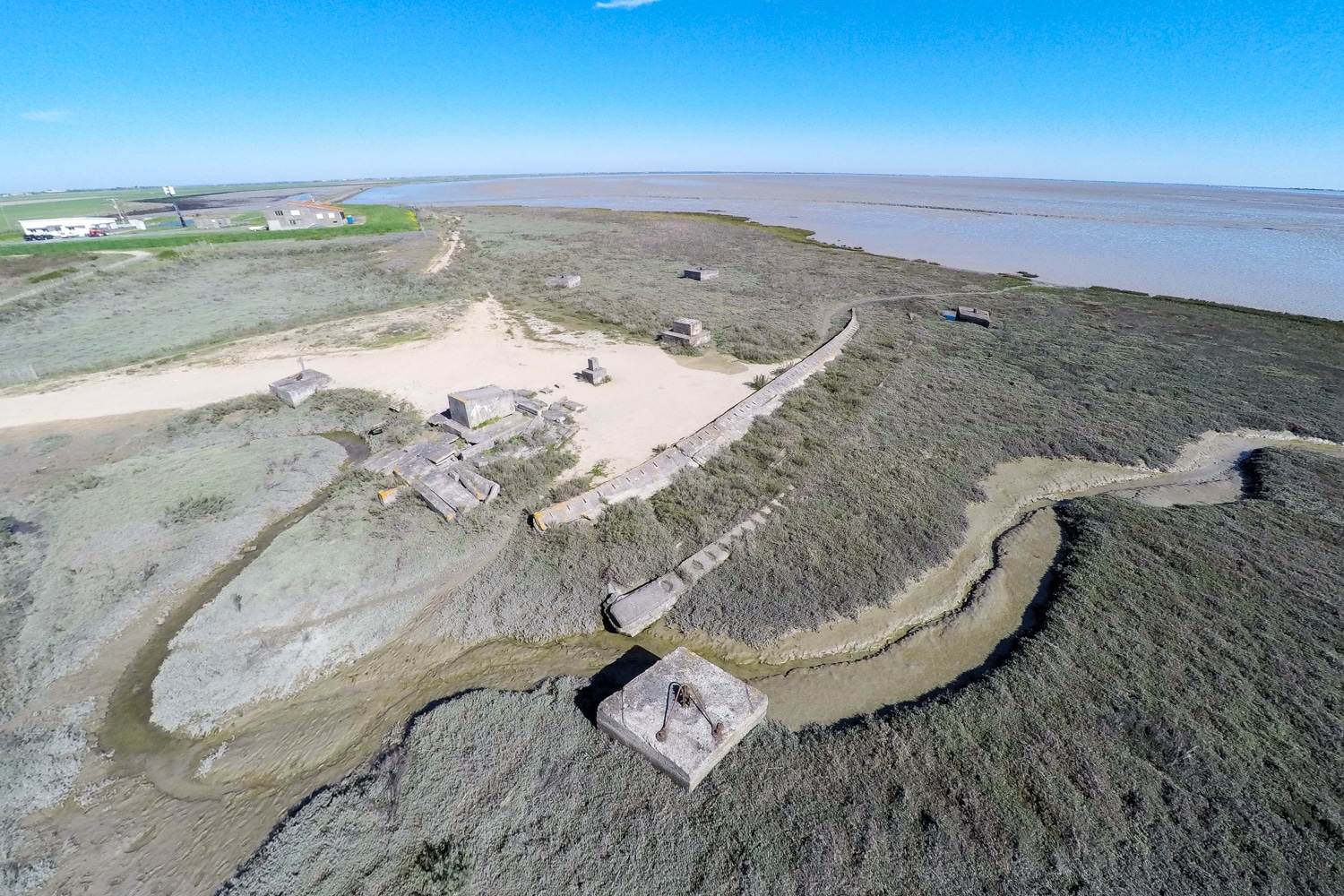
© Thomas Jouanneau / PHONIC LIPS
THE STUDY’S PROGRESS
A monitoring of passerine birds is carried out twice during the breeding season (April and May) at daybreak. It consists of covering the entire area and stopping at listening points in order to identify all singing male birds.
The Kentish Plover Charadrius alexandrinus is a protected species in France, listed in Appendix I of the Birds Directive and Appendix II of the Berne Convention and the Bonn Convention. The Pointe de l’Aiguillon is the only site on the nature reserve suitable for it to breed, due to the presence of embryonic dunes.
This species’ breeding is also monitored at the Point. It requires careful observations of this discrete species in order to determine the number of breeding pairs. The Kentish Plover Charadrius alexandrinus is a species subject to various types of human disturbance during breeding and can, in case of failure, lay several clutches. It is therefore necessary to carry out several monitoring sessions during the breeding season.

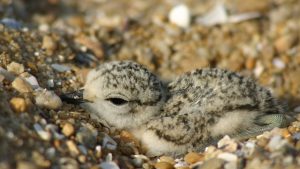
Young Kentish Plover
RESULTS
PASSERINES
Since 2016, 34 species of passerines have been identified at the Pointe de l'Aiguillon. Proven breeding of the Short-toed Lark (Calandrella brachydactyla) is noteworthy. Species commonly found on salt marsh habitats of the reserve (Bluethroat Luscinia svecica, Skylark Alauda arvensis, Fan-tailed Warbler Cisticola juncidis, Reed Bunting Emberiza schoeniclus ...), species dependant on the dune habitat (Tawny Pipit Anthus campestris, Short-toed Lark Calandrella brachydactyla) as well as species that are found in scrub and bushy areas (Dunnock Prunella modularis, Nightingale Luscinia megarhynchos, Linnet Carduelis cannabina, Stonechat Saxicola rubicola...) occur.
Reinforcement work on the public channeling facilities (installation of slats and smooth wire) reduces trampling of the gray dunes and salt marshes. They contribute to a better state of conservation of the habitats of the Point and to the development of the floristic procession associated with the habitats of embryonic dune, gray dune and salt meadows. They thus improve the attractivity of these areas for birds dependent on these environments.
Skylark (Jean C. Roché)
Bluethroat (Jean C. Roché)
Tawny Pipit (Jean C. Roché)
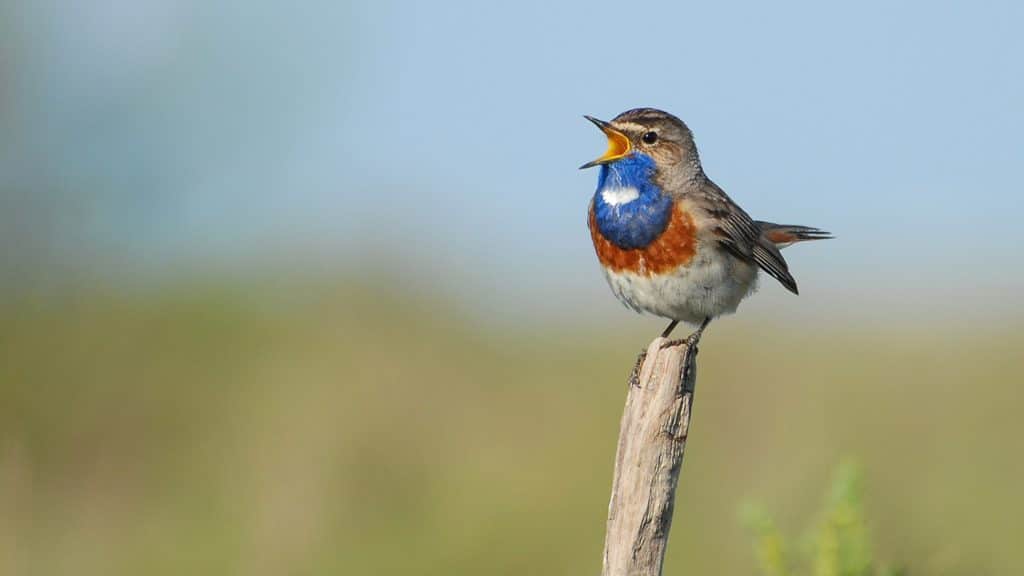
Bluethroat
KENTISH PLOVER Charadrius alexandrinus
Between 6 and 10 Kentish plovers breed at the Pointe de l'Aiguillon every year. The modification of the path by the installation of ganivelles and therefore the closure of access to the public allowed a pair to nest in the area in 2021. Raising public awareness of the nesting of the Kentish Plover by posting information panels also helps to promote the reproduction of this species.
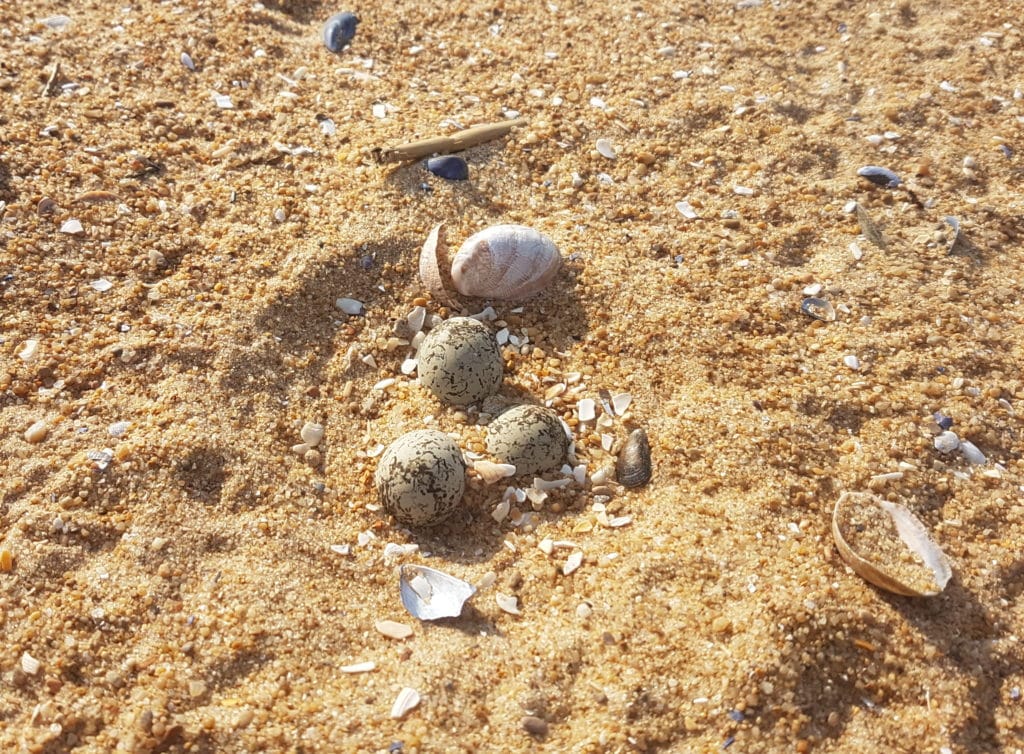
The female lays 3-4 eggs on the ground, in a small scrape. Incubation of eggs, carried out by both sexes, takes about 26 days.
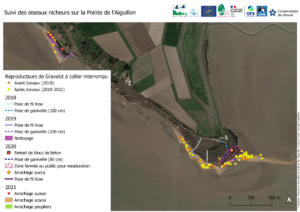
Location of Kentish plover breeders since 2016.
OBJECTIVES
With the acquisition of the Prée Mizottière in 2001, the objective of the “Conservatoire du littoral” was to convert arable land into ecologically oriented wet meadows with the maintenance of an economically viable agricultural operation. In 2004, a farmer settled at the Prée Mizottière. His agricultural objectives were consistent with the wishes of the “Conservatoire du littoral”.
The LIFE Baie de l'Aiguillon project provides for ecological improvement work: the restoration of hydraulic structures facilitating water management in the area and the relocation of a sea dyke in order to create a real estuarine environment (salt marshes, reedbed) instead of the land being used for growing cereals. An increase in educational activities is also planned within the framework of LIFE with the building of an observation platform.
The work proposed concerns the restoration of natural environments. It is therefore essential to monitor the species dependant on the Prée Mizottière natural meadows and wetlands before and after the work.
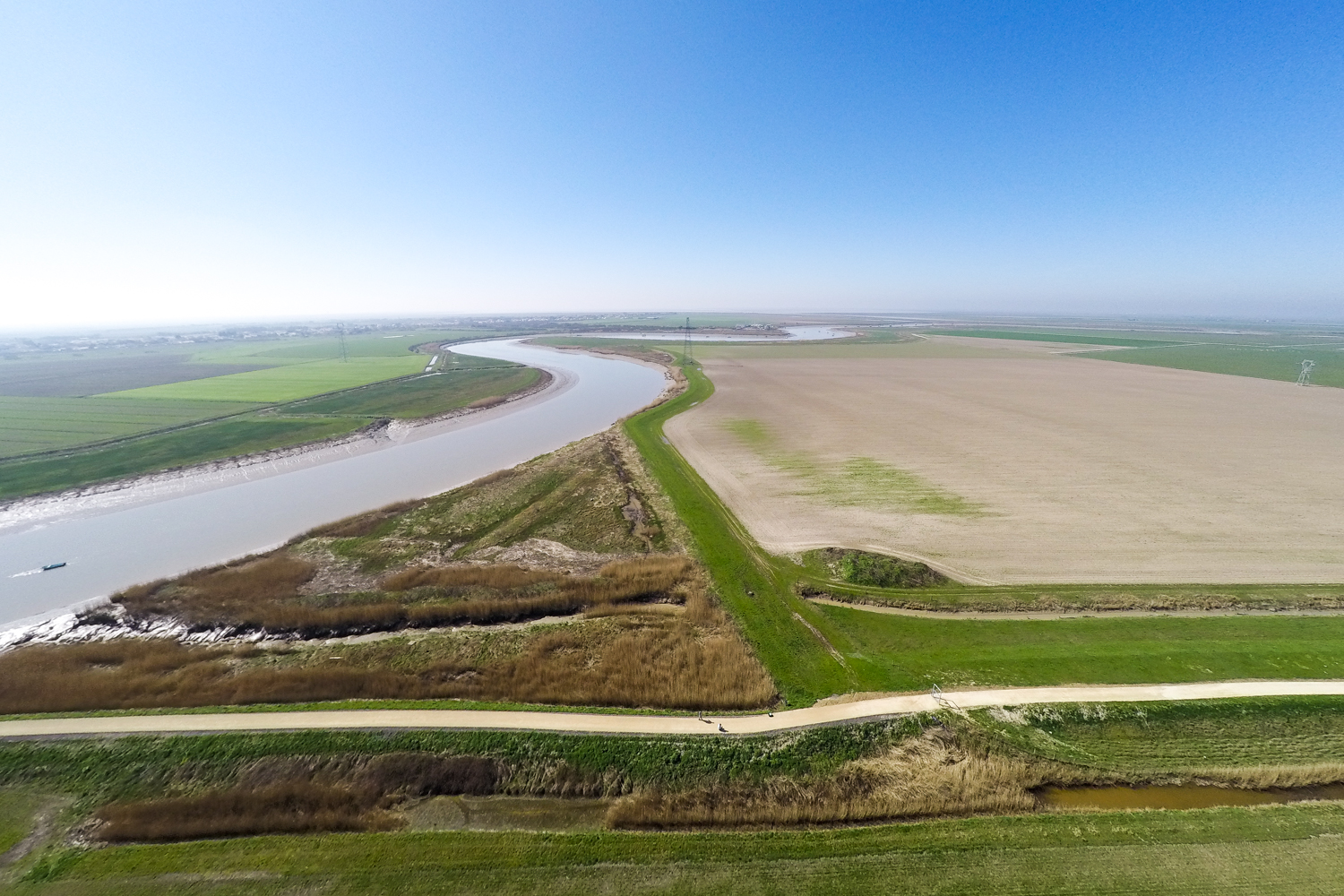
Prée Mizottière dyke along the Sèvre Niortaise river © Thomas Jouanneau / PHONIC LIPS
PROGRESS OF THE STUDY
The monitoring of amphibians is also carried out at Prée Mizottière. Three censuses are carried out during the season (from March to May), at nightfall. The monitoring consists in carrying out regular listening points and identifying the presence or absence of amphibians in a 100m² square. All amphibians heard are noted for each listening post.

Nocturnal amphibian monitoring in April 2019
RESULTS
The work carried out at Prée Mizottière is part of the restoration of natural environments. Monitoring of species reliant on natural meadows and salt marshes is therefore carried out before and after work.
BREEDING PASSERINES
In the spring, the team conducts the monitoring of breeding passerines of the Prée Mizottière by using listening points. The map below presents the results of this monitoring in 2019: the different species reliant on different habitats including the Skylark and Corn Bunting in open areas of crops and meadows, the Reed Warbler in reedbeds, the Bluethroat and the Reed Bunting on salt marshes.
AMPHIBIANS
In the spring, the nocturnal monitoring of amphibians by using listening points is also carried out. The two main species present on the Prée Mizottière are the Parsley Frog Pelodytes punctatus, a small toad typical of the wet meadows of the Marais Poitevin, and the Stripeless Tree Frog Hyla meridionalis at the northern limit of its range.
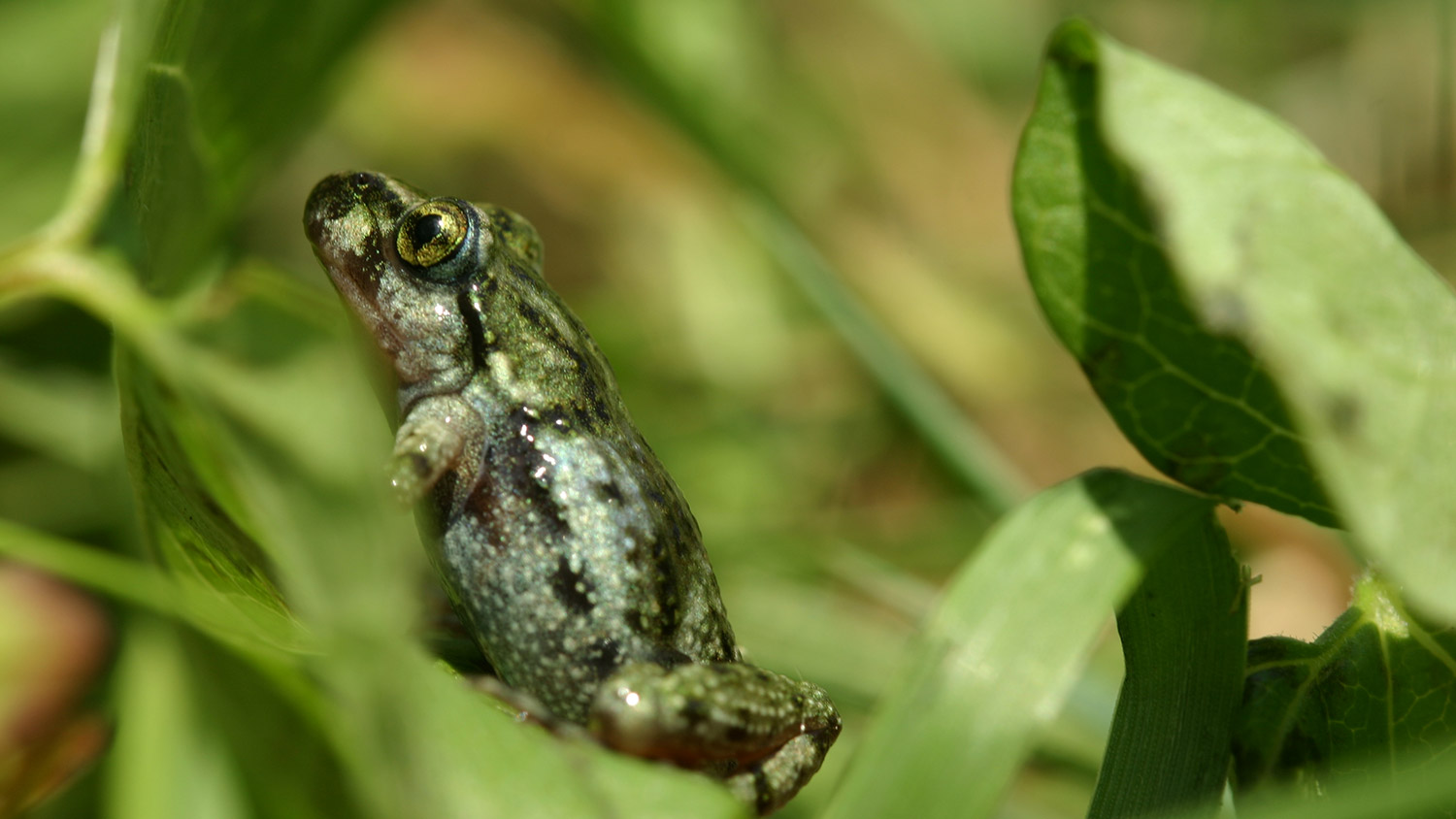
Parsley Frog : © Bequard
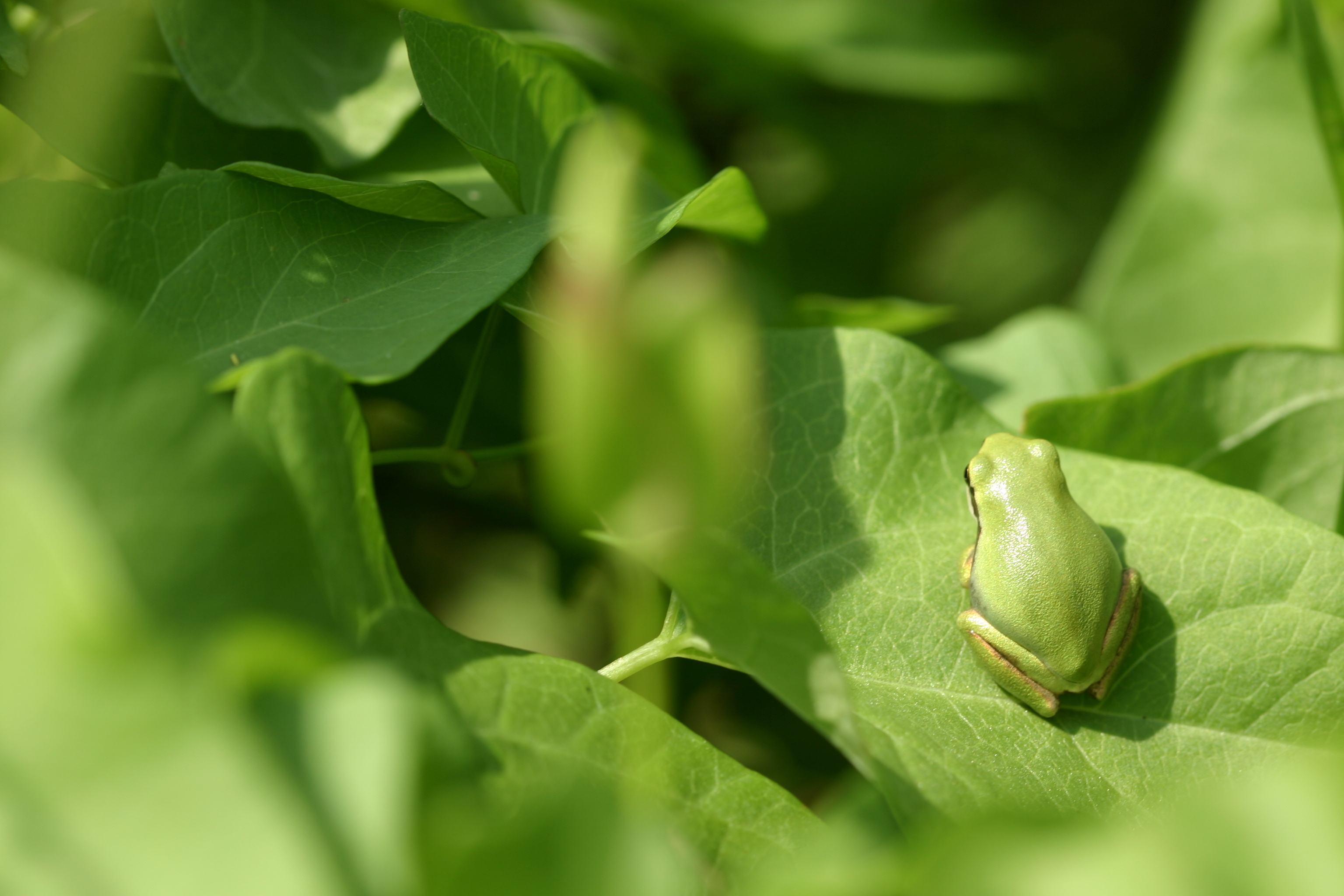
Stripeless Tree Frog Hyla meridionalis: © Bequard
The maps below show the amphibian species and species associations recorded on the site during monitoring in 2017 (before works) and 2021 (after works, last year of monitoring). The number of occupied meshes is higher in 2021.

